Why?The causes of pain in the joints of the fingers can be completely different, but the resulting problem is the same. This is a tremendous concern, which is quite capable of poisoning life, because with our hands we make many movements during the day.
What should be done?There are different ways to minimize pain. It is very difficult to completely eradicate the problem, but it is also possible. The main thing is to make an accurate diagnosis with the help of specialists and choose a treatment regimen. However, it is even more important not to neglect preventive measures.
The main causes of pain in the joints of the fingers
Hand injuries
The pain from a bruised finger is quite moderate and goes away quite quickly. True, not without consequences: hemorrhage, bruising, hyperemia or swelling may appear in the bruised area. But the finger will work as usual, with minor disturbances. A hematoma on the finger from the palm is characterized by pain of moderate intensity and subsequent peeling of the skin (dark blood accumulates in the cavity).
Subungual hematomas are much more difficult to endure: they are accompanied by strong throbbing and squeezing pain, which is felt especially when you lower your arm. After a bruise, the nail plate can peel off completely or partially.

Intense, exploding pain can be caused by a broken toe. Such injuries are accompanied by sharp pains, which then weaken somewhat, but do not disappear. The finger ceases to function normally, swells, turns into a persistent bruise, sometimes becomes pathologically immobile, deforms (at the joints and not only) and makes a cracking sound. If you try to move the injured joint of the finger, it rises and resists.
Frostbite in the hands is accompanied by mild tingling pain in the first hours, which then increases and becomes burning. The finger becomes bluish and swollen. With severe frostbite, the distal parts lose sensation, the fingers become pale and cold, and pain is felt between the damaged and healthy areas.
Infectious infections
The cause of rapidly increasing pain in the finger joint may be panaritium. An abscess forms, the finger swells, turns blue and hyperemia is observed. The nature of the pain is throbbing and throbbing. It disturbs the patient at night, especially if the felon has developed under the nail or deep in the limb (tendon, bone, articular felon). Superficial forms of this disease (subcutaneous and cutaneous, peri- and subungual) do not particularly affect general well-being, but deep panaritium can lead to fever and general intoxication.
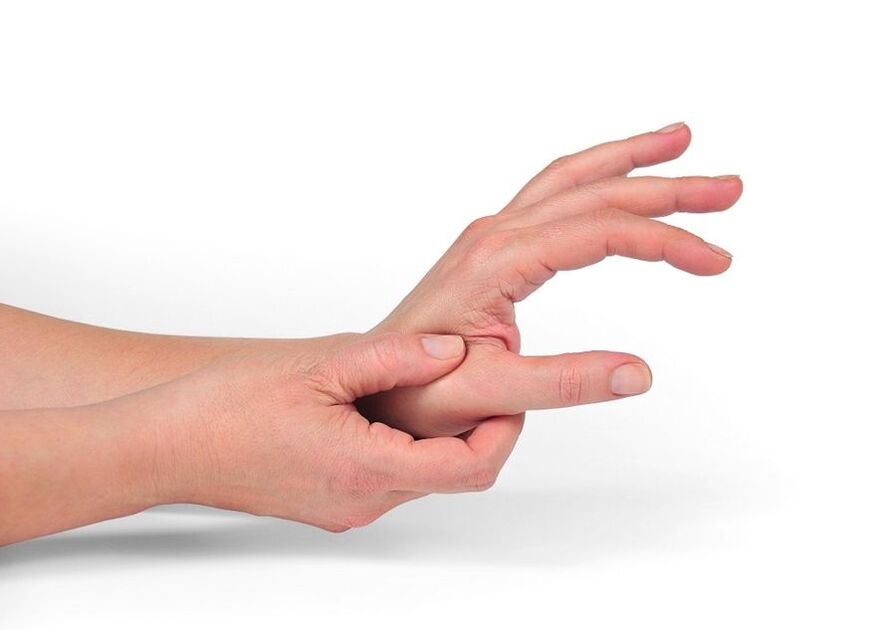
A more exotic cause of pain in the finger joint is ringworm. It affects people who cut and process the carcasses of commercial marine animals. A small wound, crack or scratch on the skin is enough for the infection to penetrate and affect the entire finger. The disease begins with mild dull pain at the site of the injury, but after a day or two discomfort appears in the joint, most often in the proximal one, the pain intensifies, the joint begins to ache and throbbing, the finger swells, fades. or turns bluish.
Arthritis of the joints
Rheumatoid arthritis is a common cause of symmetrical pain in the finger joints of the upper extremities. The intensity of the symptoms varies: in the first degree - only mild arthralgia and stiffness of movement (which, however, passes quickly), in the second - long periods of stiffness, redness of the affected joints, limitation of their mobility, paincontinuous (both at rest and in motion), and with the third it becomes impossible to move the diseased joint at all, stiffness and swelling do not go away, hyperemia and pain are constant and very noticeable.
Usually it is women who ask about the causes and methods of treatment of pain in the joints of the fingers: the right half of humanity suffers more often from gouty arthritis. It can affect one or several finger joints at the same time, causing sudden severe pain, swelling, hyperemia, increased body temperature and immobilization of the affected finger.
Common symptoms of the disease are pain that increases at night and at rest, but decreases during the day and when moving, as well as swelling of the fingers, blue or purple skin. The interphalangeal joints of the fingers are most often affected. The finger is gradually deformed in several places.
Post-traumatic arthritis affects only one joint. With arthritis caused by allergic and infectious causes (for example, diseases of a viral and bacterial nature), several finger joints can be affected at once. Occupational peripheral arthritis affects only those joints that are loaded the most.
In any case, pain in the knuckles, the cause of which is arthritis in one form or another, bothers mainly at night and disappears during the day, leaving only local swelling, difficulty in movement and a little stiffness in the morning. Long-term advanced arthritis leads to deformity of the fingers.
Degeneration of joints due to disease
In the initial stage of arthrosis of the hands, pain in the fingers is characterized by short duration, periodicity and uncertainty. In the morning, joint movements are limited. As arthrosis progresses, the pain becomes stronger and longer, accompanying every movement of the fingers, their character is sometimes burning. Housework and small operations become increasingly difficult to perform with the affected hand. Lateral deformities occur and Bouchard and Heberden nodes become visible.
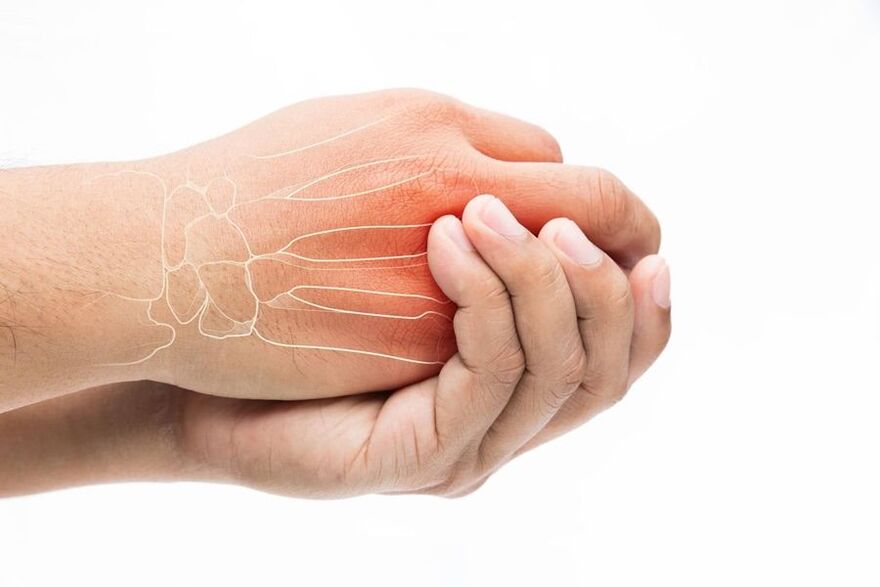
Pathologies of tendons and ligaments
Pain in the palm and base of the finger is usually caused by stenotic ligamentitis. Initially, the pain is felt only with some movements of small amplitude and with pressure, but gradually it begins to appear at rest. Movements are limited, joints click. The more the disease develops, the more noticeable is the recoil after such clicks and the flexion contracture.
If the cause of the pain in the joints of the fingers is de Quervain's disease, then the discomfort is first noticed only when you bend and grab this finger, but then any movement causes pressing pain, pain (and sometimes you don't even need to move anything, the jointit hurts even at rest). The pain syndrome often radiates to the distal phalanx, in some cases to the forearm on the side where the first finger grows.
Angiotrophoneurosis
When vasospasm occurs, Raynaud's syndrome occurs. Because of it, the fingers become paroxysmally cold and numb. The second stage of the attack is accompanied by excruciating pain with an explosive and burning effect. The attack does not last long. After that, the distal parts of the hands become red and feel hot. The causes of this condition, which causes pain in the joints of the fingers, are very different. It can be:
- rheumatoid arthritis;
- systemic lupus erythematosus;
- scleroderma;
- Sharp's syndrome;
- antisynthetase syndrome;
- thromboangiitis obliterans of the hands;
- occupational diseases, pathologies of metabolic and endocrine systems.
If the patient is not diagnosed with any of these diseases, then the cause of the pain in the finger joints is Raynaud's disease with its characteristic set of symptoms. Women are more sensitive to it.
Hematologic, neurological, and endocrine diseases can lead to erythromelagia, but it can also occur on its own. The disease is expressed in the form of hyperemia and swelling of the fingers, burning, paroxysmal and paroxysmal pains, sometimes in both hands at once or first in one and then in the second. The pain attack is so strong that it is simply impossible to move the fingers. You can relieve the pain by elevating or cooling the affected arm (when the limb is warmed up and lowered, the pain worsens).
Nervous diseases
If you feel a burning or burning pain in the knuckle, the cause is likely neurological. Especially if, in addition to the pain, the sensitivity of the hand is also damaged and vegetative-trophic disorders are observed.
This can be, for example, neuropathy of the median nerve. With this disease, the palmar part of the first to third fingers hurts and they cannot bend. It is not possible to move the first finger forward and there are serious problems even with clenching the palm into a fist.

Attacks of pain in the joints of the fingers at night and the disappearance of pain when shaking or lowering the hands can indicate carpal tunnel syndrome. With this type of neuropathy of the median nerve, the pain is also localized on the side of the palm.
If the neuropathy has developed in the radial nerve, then, on the contrary, the dorsum of the hand and the first finger (sometimes even the second and third) hurt, provided that the wrist or forearm is affected. The back of the hand may become numb and the pain may radiate to the forearm, even if it itself is healthy.
If the cause of the pain in the finger joints is neuropathy of the ulnar nerve, then these pains (in the hand and the fourth and fifth fingers) are of a radiating nature, and the main source of discomfort is located in the elbow joint. The elbow and hand hurt especially bad in the morning.
Tumors
In addition to malignant neoplasms of the hands (from which people suffer quite rarely), pain in the joints of the fingers can also be caused by benign tumors: chondroma or osteoid chondroma. The pain in the first case is mild and not localized, but osteoid osteomas, on the contrary, lead to sharp pains strictly in the affected area.
Other reasons
Writer's cramp, which accompanies a number of neurological and mental disorders (in particular, occupational neurosis), also causes pain in the finger joints in men and women and requires treatment. Writing, typing on a computer keyboard or typewriter becomes painful. An annoying, painful pain is accompanied by a sharp weakness, tremors in the hand and local cramps. Pain in the finger joints can also be caused by other pathologies:
- leukemia (Macroglobulinemia Waldenström);
- neoplasms in the adrenal glands (aldosteroma);
- complications of diabetes (diabetic neuropathy);
- vascular lesions (distal digital embolus in case of occlusion of the subclavian artery);
- hereditary diseases (Fabry disease);
- typical childhood diseases, for example, neuro-arthritic diathesis.
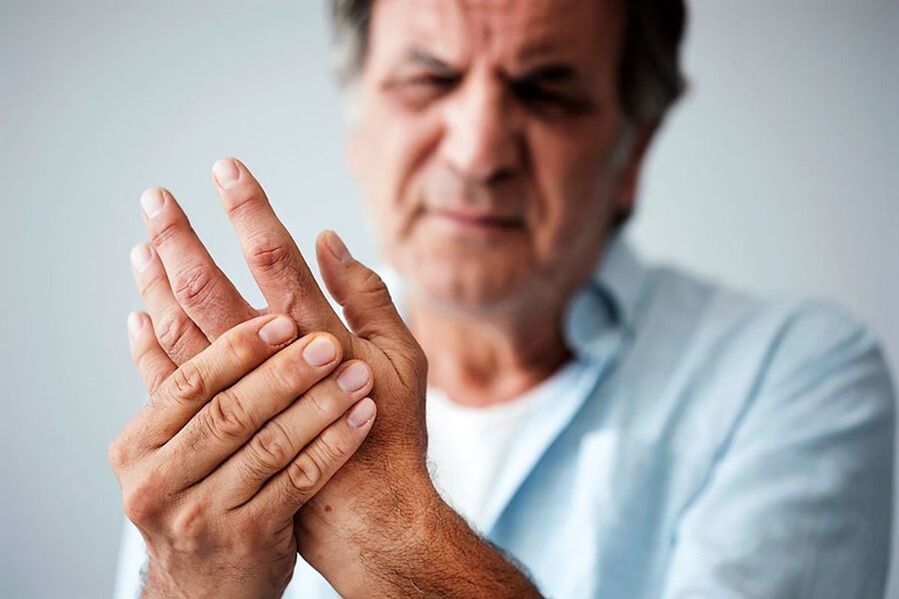
Diagnosis and treatment of pain in the joints of the fingers
An accurate diagnosis will allow you to determine the true causes of pain in the joints of the fingers, whether they are inflammatory or another pathological process. If the pain is very strong and it is difficult to straighten and bend the fingers, be sure to seek medical help. Your doctor will likely send you for a test, which usually consists of:
- laboratory tests of blood, urine, rheumatic tests;
- radiography;
- MRI,
- computed tomography of the fingers.
Treatment tactics aim not only to relieve the patient's pain in the finger joints, but also to eliminate its causes. For example, for inflammation, anti-inflammatory drugs (hormonal or non-steroidal) are prescribed, and for infection, antibiotics.
The main goal of therapy in the case of dystrophic joint damage is the restoration of cartilage tissue, for which massage, physiotherapy and chondroprotectors are used. To restore joint mobility, special exercises are prescribed.
Physical therapy has been proven to be the most effective way to treat small joints, including the fingers. These are electrosleep, MRI and electrophoresis with novocaine, as well as a number of other procedures. During remission, it is advisable to undergo treatment in a sanatorium or resort using radon or hydrogen sulfide sources.
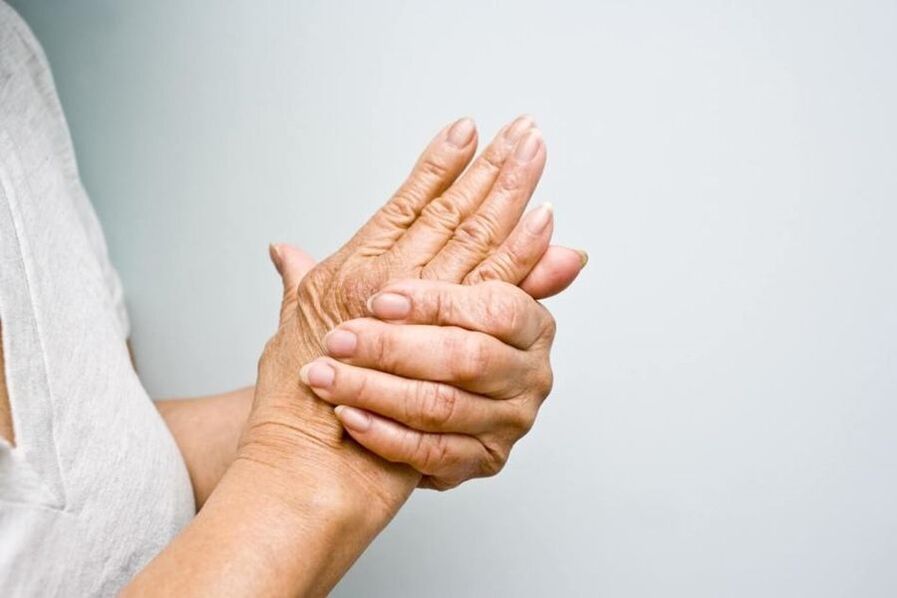
Regarding the diet, for pain in the joints of the fingers, regardless of their causes, it is recommended:
- eat more seafood and fish to get phosphorus, calcium and iron;
- take apple cider vinegar to remove toxins from the body;
- consume fish oil and linseed oil (the fatty acids they contain help normalize fat metabolism).
It is also very useful to add nuts, ginger, fruits (currants and pomegranates), radishes and lettuce to your diet. But it is advisable to limit mayonnaise, sweet and starchy, spicy and smoked foods, as well as fatty dairy products.
Prevention of pain in the joints of the fingers
Eliminate the causes of finger joint pain in men and women so that treatment is not necessary:
- don't get your hands cold;
- limit alcohol consumption and if you smoke, give up this habit;
- keep a balance of vegetables and fruits in your diet, and less canned, spicy and fried foods;
- treat all runny noses and ARVI, without hoping that the disease will go away by itself;
- Make sure your body weight is normal;
- stop snapping your fingers.
Do a simple exercise to prevent carpal tunnel syndrome, so you don't have to think about how to treat pain in the joints of the fingers and what are their causes. If you work a lot on the computer, then this is a must. Clench all your fingers into a fist, raise your thumb as a sign of approval, and rotate it first clockwise, then counterclockwise. There are many other exercises for your knuckles.
Exercises against pain in the joints of the fingers
Make a fist
Spread your palm, fingers stretched, so that tension is felt in all the joints and muscles. This simple action should not be accompanied by pain.
Do a simple stretch: squeeze your palm into a fist for half a minute to a minute so that the thumb stretches over the rest, then unlock and stretch all the fingers, spreading them. Do this at least four times for each hand.
Stretch your fingers
To make your knuckles more mobile and relieve pain when you bend them (whatever the cause of the pain), repeat a simple exercise.
The palm is placed on a flat surface with the back facing up. The fingers should be straightened without straining the joints and held there for 30-60 seconds. Then relax your hand and return to the starting position. Repeat four times with each hand.
Use this exercise to relieve pain and improve joint mobility.
Draw the claws
Another exercise for the mobility of the finger joints.
Turn your palm with the inside facing you and bend the fingers so that their tips are at the base of the joints and the hand looks like a paw with claws. Hold for half a minute or a minute, repeat four or more times for each hand.
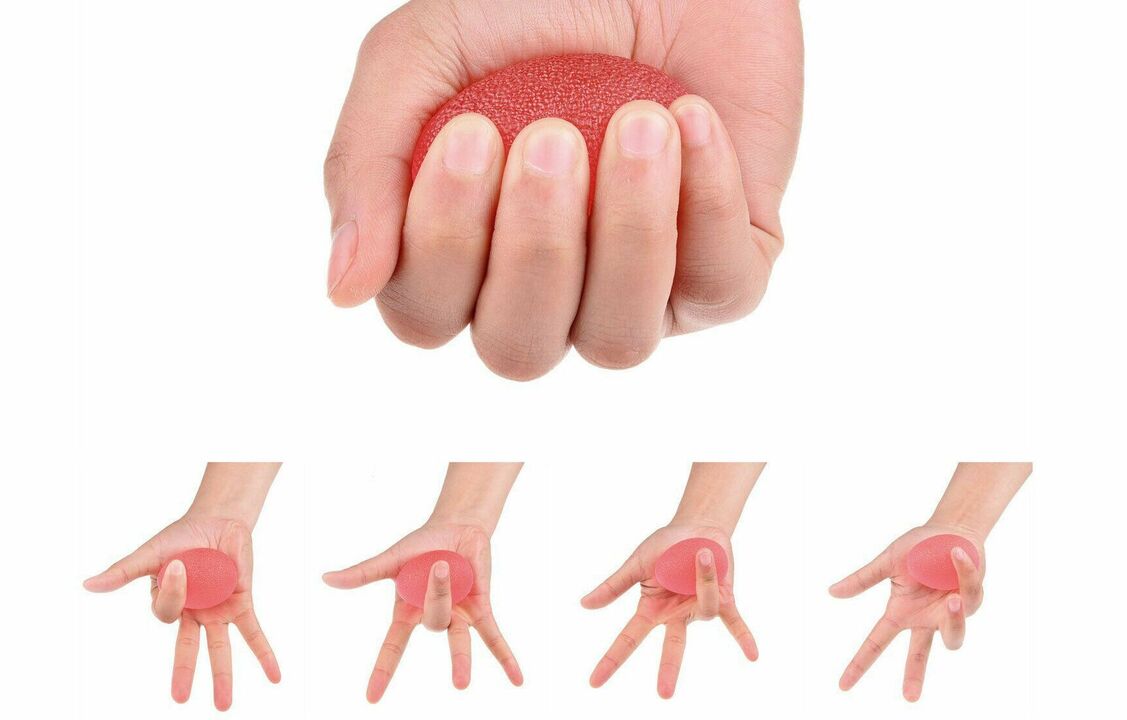
Train your control
Regardless of the reasons that cause pain in the joints of the fingers, a person must somehow hold objects, use door handles, etc. , so it is advisable to train the fingers.
Squeeze the soft ball as hard as you can for a few minutes. Let him go. Repeat 10-15 times with each hand, two or three times a week (but with an interval of at least two days between sessions). Exercise is contraindicated for injuries to the joints of the thumb.
pinching
This exercise trains the muscles of the fingers to facilitate the opening of various packages and doors with keys and filling the car with fuel. Grasp the soft ball with your thumb and every other finger, holding it for half a minute or a minute. For each hand you need to repeat pinching 10-15 times. Like the previous exercise, pinching is performed two to three times a week with a mandatory 48-hour interval between sessions and only if the thumb joints are not injured.
Raise your finger
This exercise helps to make your joints more mobile and your fingers flexible.
The palm is placed on a smooth surface with the back facing up. You have to lift each finger one at a time and put it back down, but you can immediately use all the fingers at the same time. You should do this 10-12 times with each hand.
Pull back your thumb
This exercise trains the thumb muscles to make it easier to grasp and lift objects (for example, cans and bottles).
Wrap your palm and thumb with an elastic band and place them on a table or other flat surface with the back facing up. Using the resistance of the rubber band, move your thumb to the side, hold it there for half a minute or a minute and then relax, and so on 10-15 times with each hand. Exercise is done two or three times a week, but not more often than once in 48 hours.

This exercise trains the thumb muscles to make it easier to grasp and lift objects (for example, cans and bottles).
Wrap your palm and thumb with an elastic band and place them on a table or other flat surface with the back facing up. Using the resistance of the rubber band, move your thumb to the side, hold it there for half a minute or a minute and then relax, and so on 10-15 times with each hand. Exercise is done two or three times a week, but not more often than once in 48 hours.
Bend your thumb
The mobility of the thumb should also be developed.
Raise your palm in front of you, with the back facing down. Alternatively, move your thumb to the side and bend toward your palm to touch the base of your little finger. After holding it for half a minute or a minute, relax. Repeat these steps four times for each hand.
Tap with your thumb
Stiffness and pain in the joints of the fingers are caused by various reasons, but, in any case, it is useful to train the thumb so that daily actions such as writing by hand, holding a spoon, brushing the teeth, etc. , do not cause problems. .
Place your palm in front of you, pointing your wrist, and touch your thumbs with all the others to form the letter O. After holding it for half a minute or a minute, relax your palm. At least four repetitions for each arm.
Stick out your thumb
The thumb needs stretching.
Raise your hand in front of you, palm facing you, and bend your thumb toward your index finger for half a minute to a minute, then relax. Do this four times with each hand. Then, from the same position, extend your thumb over your palm so that the lower joint is tense and hold for half a minute to a minute. There are four more repetitions.
The most common causes of pain in the joints of the fingers when bending are not only injuries and infections, but also overwork. If the finger joint is sick, you must act urgently: first of all, consult a specialist - surgeon, neurologist or traumatologist. To relieve pain, make your joints more mobile and your muscles strong, exercise your fingers and palms regularly.



















